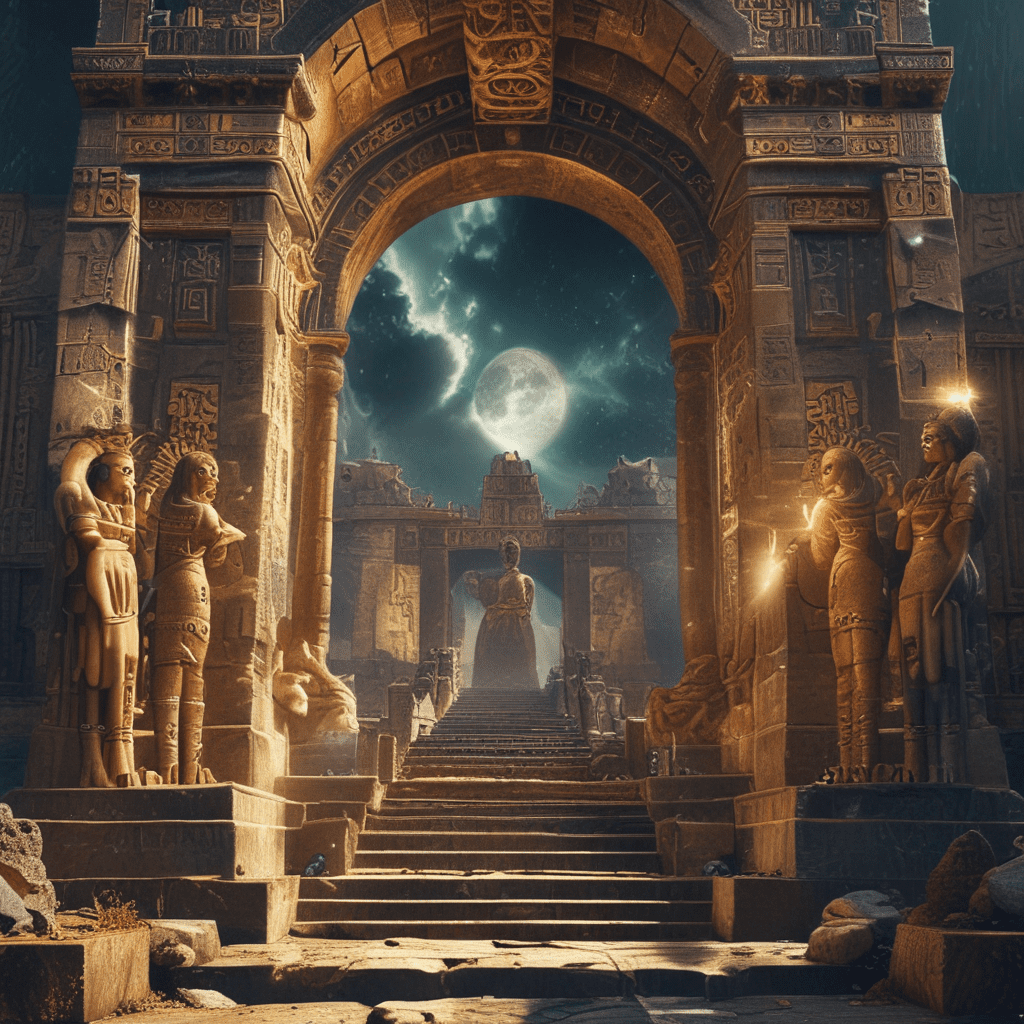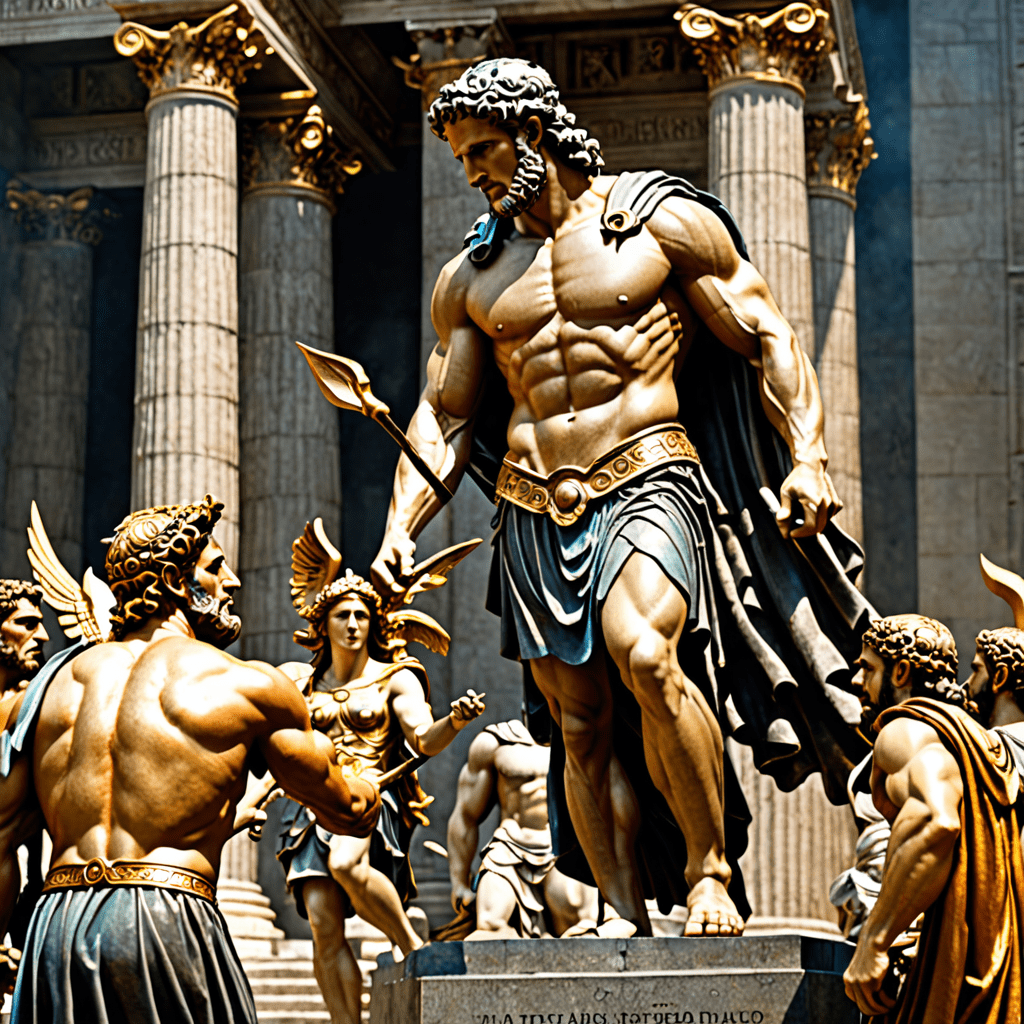The Incan Myth of the Temple of the Moon: An Introduction
The Temple of the Moon, also known as the "Temple of the Virgins" or the "Temple of the Moon Goddess," is a fascinating and mysterious archaeological site located in the ancient city of Cuzco, Peru. This sacred structure, dating back to the Inca Empire, is steeped in mythology and intrigue, holding a unique place within the Incan belief system. The temple's connection to the lunar deity and its potential role as a gateway to the underworld make it a subject of ongoing research and fascination for archaeologists, historians, and mythologists alike.
The Temple of the Moon: A Sacred Site
The Temple of the Moon is situated on the outskirts of Cuzco, facing the imposing peak of the sacred mountain, Machu Picchu. The temple's construction is a testament to the architectural prowess of the Incas, featuring intricately carved stone walls and a grand courtyard. Unlike its counterpart, the Temple of the Sun, which was dedicated to the sun god Inti, the Temple of the Moon served as a place of worship for the lunar deity Mama Quilla, the Incan goddess of the moon.
The Myth of the Underworld in Inca Culture
The Inca civilization held strong beliefs about the afterlife, a realm known as "Ukhu Pacha." This underworld was a vast and mysterious place, believed to be ruled by the god Viracocha, the creator deity. The Incan people believed that upon death, their souls would journey through the underworld, facing trials and challenges before reaching their final destination. This journey was often depicted in Incan art and mythology, featuring imagery of caves, tunnels, and subterranean rivers.
The Temple of the Moon as a Gateway to the Underworld
The Temple of the Moon is often associated with the Incan myth of the underworld. Many scholars believe that the temple's location on the outskirts of Cuzco, facing the mountain, symbolized the entrance to Ukhu Pacha. The temple's subterranean chambers and tunnels, some of which remain unexplored, are seen as evidence of its connection to the underworld. These underground spaces may have been used for rituals or ceremonies intended to communicate with the spirits of the deceased or to guide their souls through the underworld.
The Role of the Moon in Inca Mythology
Mama Quilla, the goddess of the moon, held a significant place in Inca mythology. She was believed to be the wife of Inti, the sun god, and was responsible for regulating the lunar cycle, influencing fertility and the tides. Mama Quilla was also associated with water and agriculture, as the moon's cycles were seen to influence the growth and harvest of crops. The Incas revered Mama Quilla as a powerful and benevolent deity, and the Temple of the Moon served as a focal point for her worship.
The Connection Between the Temple of the Moon and the Sun Temple
The Temple of the Moon, despite its dedication to Mama Quilla, is inseparably linked to the Temple of the Sun, the most prominent religious structure in Cuzco. Both temples were integral to the Incan belief system and reflected the interconnectedness of the sun and moon in their cosmology. The Temple of the Sun, dedicated to Inti, the sun god, represented the life-giving force of the sun and its influence on the planet's daily cycle. The Temple of the Moon, on the other hand, symbolized the feminine energy of the moon, its cyclical nature, and its impact on the natural world.
The two temples, though distinct in their dedications, were positioned to complement each other. They were built facing each other, symbolizing the harmony and balance between the celestial bodies they represented. Their proximity also allowed for the seamless transition between the worship of the sun and moon, demonstrating the Incan understanding of the interconnectedness of the celestial forces that governed their lives.
Theories on the Purpose of the Temple of the Moon
The purpose of the Temple of the Moon has been a subject of debate among scholars and archaeologists. Some believe it was primarily a place of worship for Mama Quilla, where rituals and offerings were conducted to appease the moon goddess and seek her favor. Others speculate that the temple's location, on the outskirts of Cuzco, suggests a more symbolic function, serving as a gateway to the underworld and a place for the transition of souls.
One theory suggests that the temple's subterranean chambers were used for initiation ceremonies, where young Incan women, chosen to serve as priestesses in the Temple of the Sun, underwent a period of spiritual preparation. This theory is supported by the temple's nickname, "Temple of the Virgins," which refers to the young women who served as priestesses and whose lives were dedicated to the worship of the sun and moon.
The Temple of the Moon as a Place of Sacrifice
The Incan civilization practiced rituals involving human sacrifice, and some scholars believe that the Temple of the Moon may have played a role in these practices. While no direct evidence of human sacrifices at the temple has been found, the Incas considered the moon to be a powerful entity, and sacrifices were often offered to appease or seek favor from deities.
The Temple of the Moon's location, on the edge of the city facing the sacred mountain, may have been chosen for its symbolic significance. The mountain was believed to be a gateway to the underworld, and sacrifices may have been offered at the temple to appease the spirits of the deceased.
The Temple of the Moon as a Site of Ritual and Ceremony
The Temple of the Moon was no doubt a place where numerous rituals and ceremonies were conducted. Incan priests and priestesses used the temple to communicate with Mama Quilla, seeking her blessings for fertility, harvests, and protection. They may have performed rituals involving moonstone and other sacred objects, invoking the moon's power over the natural world.
The temple's subterranean chambers may have played a role in these ceremonies, providing a space for intimate rituals and a connection to the underworld. The Incas believed that the underworld was a place where the spirits of the deceased resided, and the temple's connection to the underworld may have allowed for communication with the spirits of ancestors.
The Temple of the Moon: A Lasting Legacy
The Temple of the Moon, despite its mysterious nature, stands as a testament to the sophistication and spiritual depth of the Incan civilization. Its existence offers a glimpse into their complex belief system and their reverence for the natural world. The temple's connection to the moon and the underworld continues to fascinate and inspire, reminding us of the enduring power of mythology and the enduring mystery of the ancient world.
Frequently Asked Questions
What is the Temple of the Moon?
The Temple of the Moon is an ancient Incan temple located in Cuzco, Peru. It was dedicated to Mama Quilla, the Incan goddess of the moon.
What is the significance of the Temple of the Moon?
The Temple of the Moon is believed to be a gateway to the underworld, a place where rituals and ceremonies were conducted to appease the moon goddess and seek her favor.
What is the relationship between the Temple of the Moon and the Temple of the Sun?
The Temple of the Moon and the Temple of the Sun were both integral to the Incan belief system and represented the harmony and balance between the sun and moon.
What evidence supports the theory of the Temple of the Moon as a gateway to the underworld?
The temple's location on the outskirts of Cuzco, facing the sacred mountain, and its subterranean chambers are seen as evidence of its connection to the underworld.
What rituals were performed at the Temple of the Moon?
The Temple of the Moon was likely a place where rituals and ceremonies were conducted to appease Mama Quilla, seek her blessings, and communicate with the spirits of the deceased.



